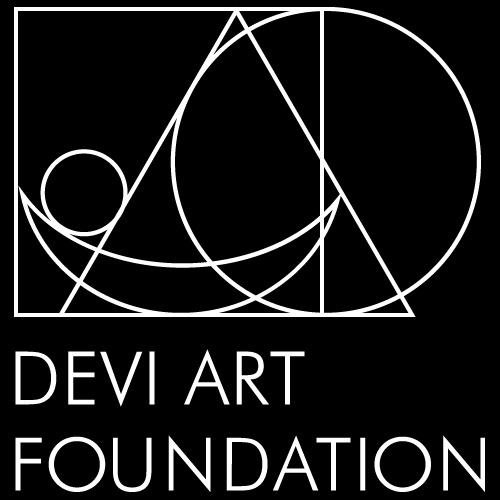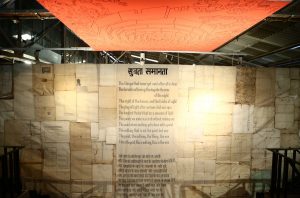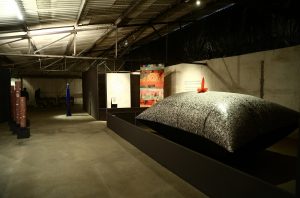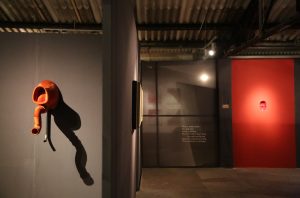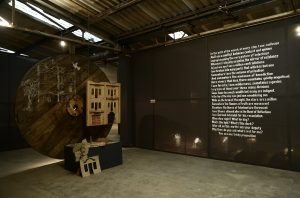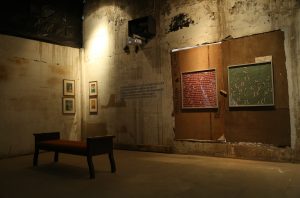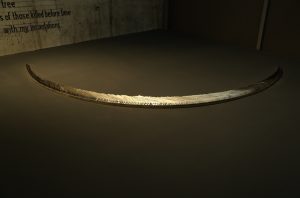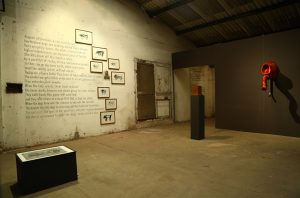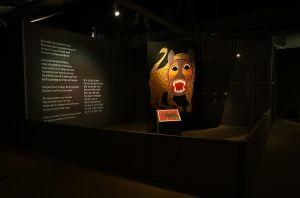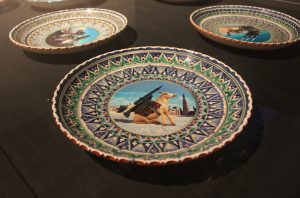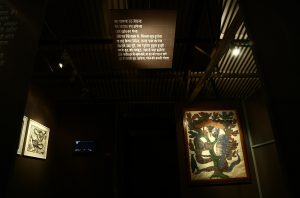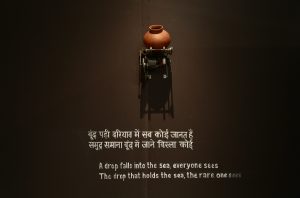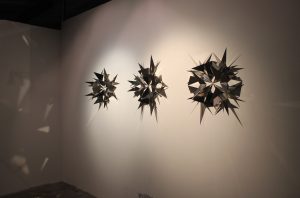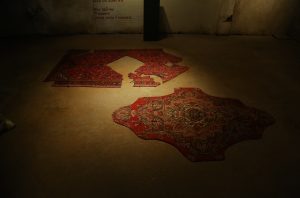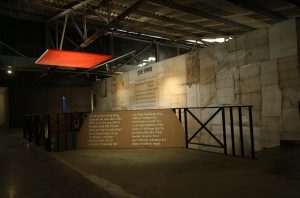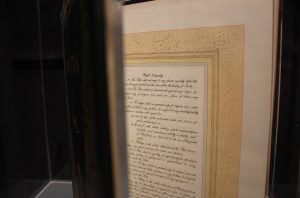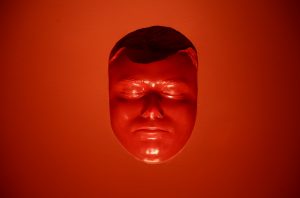Suññatā Samānta : Emptiness Equality (2020)
Story of the Making
Suññatā Samānta: Emptiness Equality, curated by Navayana publisher, writer, poet S Anand, hopes to establish the norm of equality on a scaffolding of emptiness, animated by ideas drawn from Buddha, Kabir and Ambedkar. It mounts a robust critique of not just acts of collection and gestures of curation, but the very idea of what constitutes art and who is seen to be capable of making art. Culling artworks from the collection and commissioning art from workers in the local Okhla Industrial Area (typically not considered “artists”), it challenges and collapses the categories and labels that populate the social and art worlds. The exhibition not only pokes the conscious of people but also makes them witness art for what it is, by omitting the context – an exercise that induces discomfort and is freeing at the same time. All the artworks stand on display sans context, with no artist names or descriptions– thus putting the onus of reading into the work of art and its comprehension on the viewer.
Highlights
– Sunnata Samanta: Emptiness Equality, was an exhibition curated over a period of 8 months. Anand decided to bifurcate the exhibition into 10 different unlabeled sections, meant to represent the 5 elements and 5 senses – the only few things people could find common amongst themselves irrespective of the many overlaying differences, he says.
– All guidelines on how to view, which path to take, or accompanying details contextualising artworks through name of artists, place and time of creation etc. were removed. The exhibition was designed to reflect a maze.
– An exercise was done to survey the area around the warehouse, situated in Phase 1 of Okhla Industrial Area, New Delhi, India. Through multiple interactions and discussions with workers in the industries around, Anand, along with the assistant curators and interns, was able to incorporate some locally commissioned works by ‘non-artist’ artists.
– Throughout the exhibition, a selection of writings and poetry was used to supplement (rather than complement) the context within which the artworks were placed. The method chosen to display this text was unusual. A local ‘sign painter’ was given the project of hand-painting over the untouched-unpainted walls of the warehouse, embracing the imperfections and incorporating them into the exhibition. A heraldic banner made of cloth was painted over and hung to greet the visitors/ viewers as they approached the flight of stairs leading them to the exhibition space.
– Elaborate programming ensued parallel to the exhibition. Walkthrough with poet Asad Zaidi & curator, C.R. Krishnapriya & curator and several singing walkthroughs by the curator. Three screenings of Amit Dutta’s films Jangarh Film – One (2008), Nainsukh (2010), Even Red can be Sad (2015), a live drawing and dhrupad performance by Ustad F. Wasifuddin Dagar (presented by Dhrupad Society), and a performance by Prabhakar Kamble titled ‘Stain’ was also organised.
Participating Artists:
Lida Abdul, Bani Abidi, Ishrat Ali and Intekab Ahmad, Waseem Ahmed, Mojtaba Amini, Bhuri Bai, Alwar Balasubramaniam, Farida Batool, G. Chandru, Neha Choksi, Amit Mahadev Dombhre, Anita Dube, Nicola Dhurvasula, Parastou Farouhar, Golnaz Fathi, Raju G.C., Sunil Gawde, Rajyashri Goody, Arun Kumar H.G., Jamaluddin, Prabhakar Kamble, Aslam Khan, Sonia Khurana, Girdhari Lal, Susanta Mandal, Erbossyn Meldibekov, Masoumeh Mozaffari, Mehreen Murtaza, Timo Nasseri, Jeetander Ojha, S. Paul, Pradeep, Sumedh Rajendran, Rashid Rana, Gigi Scaria, Tejal Shah, Bidyasagar Sharma, Nilima Sheikh, Sudarshan Shetty, Jangarh Singh Shyam, Mayura Subhedar, L.N. Tallur, Mohammed Ali Talpur, Ramesh Tekam, Unknown artists, Sukhnandi Vyam, Saira Wasim and We, the people.
